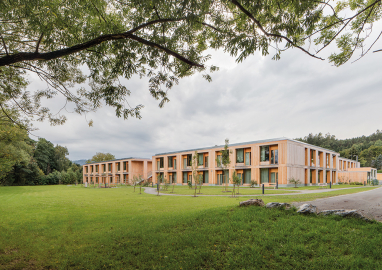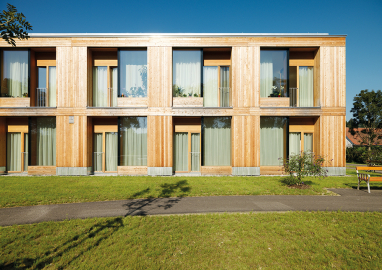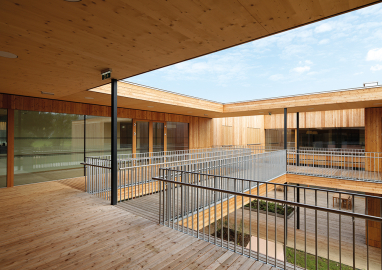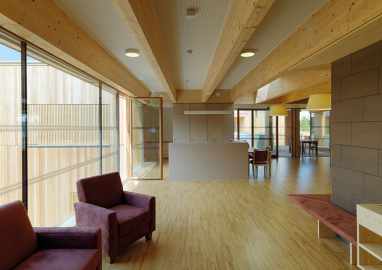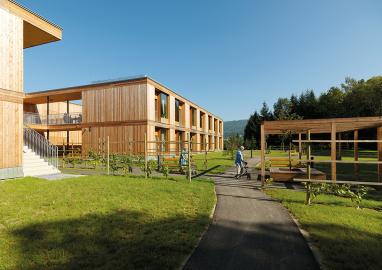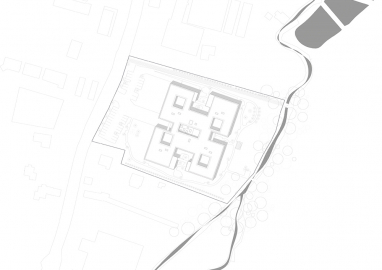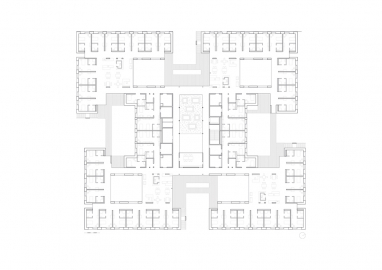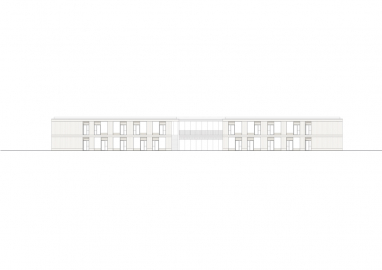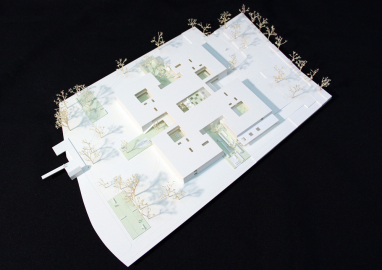Residential Care Home Erika Horn, Andritz
The barrier-free passive house and sustainable building is a modern care facility with role model effect, especially by its architectonic design, spatial and care concept, which provides 105 elderly and increasingly from dementia suffering residents an independent lifestyle and autonomy.
The residential care home Erika Horn has been constructed in Graz on a park-like plot in the immediate vicinity of the Andritzbach brook. The passive house has no basement due to the challenging ground conditions and because of its location within the Andritz flood zone.
The interweavement of the building with the outside space has been assigned particular significance. The green and open space was designed with the typology of the care home in mind and is based on a sequence of gardens which differ in size and character. The gardens also form the passage into the park bordered by the Andritzbach to the east. A particularly attractive space for recreation has been created by designing a wooden platform that juts out over the water which, together with the manifold zones of a manageable scale inside and around the building, generates a familiar yet invigorating atmosphere.
The two-storey building consists of four wings arranged around a semi-public “village square”, designed to host various events. This is also the location of the roofed vestibule, the central nurses’ station, an oratory, a cafe, a hairdresser as well as an open, tended atrium.
Three residential areas on the ground floor and four on the top floor host one carer and 15 residents each, primarily in single rooms, thereby creating a manageable and friendly atmosphere. A large common living area for each residential group, wide loggias and zoned gardens, some of which are suitable for dementia patients, on the ground floor and atria with tower galleries on the top floor serve as additional living zones. Special attention has been paid to ensure sufficient natural light floods the entire building.
Nurses’ stations and secondary rooms are always nearby, making work processes highly efficient. Shorter and longer walks around the building with varying visual references and pleasant quiet zones ensure diverse free movement opportunities, even outside set therapy sessions.
In 2015 the residential care home was certified with the EU-green building program, due to its special class of energy efficiency and its ecological construction.
The barrier-free passive house is a composite construction and features controlled domestic ventilation.
Load-bearing ceilings and walls are made of concrete while all other structural elements are made of a renewable material: wood. The façade elements, each extending across two rooms, were prefabricated.
During summer the indoor climate could be kept cool by the suction of the exterior air via earth tube and during winter the air could be kept warm with geothermics. The air-handling system measures the exterior and interior temperature and switches the suction via earth tube or suction via roof by itself. A central water heating with storage charging system was installed for the hot water production.
For the heat generation a solar thermal plant with 80% efficiency was constructed for heating support of the gas heating on the roof.
Additionally a photovoltaic power plant was built with an annual production of about 5000kW and a collector surface of 32 m².

